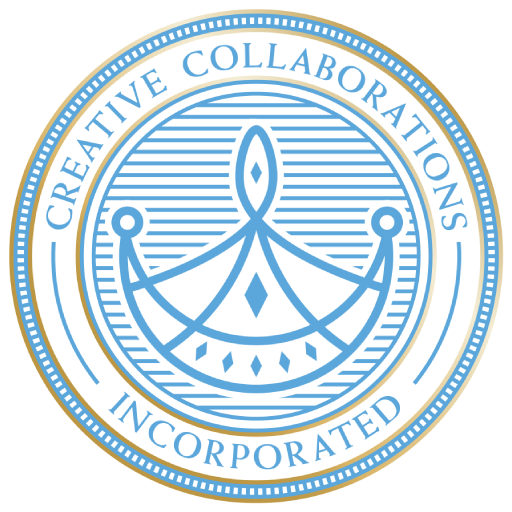In a world dominated by digital automation and virtual communication, face-to-face interactions remain a powerful and underutilized tool—especially in the context of lead generation strategies. While online campaigns can reach vast audiences quickly, personal conversations offer something digital tools cannot replicate: authentic human connections. The effectiveness of these face-to-face encounters often hinges on how well you can personalize your pitch to meet the needs, interests, and pain points of the individual standing in front of you.
This article will explain why personalization matters, explore techniques for customizing your message on the spot, and provide tips to generate leads on a budget.
The Importance Of Personalization In Face-to-Face Sales
Personalization is no longer a luxury in the sales process—it’s a necessity. Despite the saturation of generic messaging and sales scripts, most prospects still look for conversations that speak directly to their challenges, goals, and industry nuances. When implemented effectively, personalized pitches elevate a face-to-face interaction from a transactional encounter to a meaningful dialogue that fosters trust and engagement.
Unlike digital forms of lead generation, which rely on pre-segmented lists and automated emails, in-person strategies allow for adjustments based on real-time feedback. You can read body language, ask clarifying questions, and tailor your pitch within seconds. This responsiveness makes your pitch not only more relevant but also more memorable.
Tip #1: Do Your Homework Before You Engage
Although much of personalization happens in the moment, it starts with preparation. Knowing as much as possible about your target market—and ideally about the individual you’re meeting—gives you a strong foundation. Research can include:
- Company background: What industry are they in? Who are their competitors?
- Role and responsibilities: What problems are they likely trying to solve?
- Current trends: Are there shifts in the industry that you can reference?
- Recent news: Any acquisitions, product launches, or awards?
With this data in hand, you’re not walking into a conversation blind. Instead, you enter equipped with insights that enable you to ask relevant questions and provide immediate value.
Tip #2: Use The “You” Language
A common mistake in sales pitches is centering the conversation around your product or company. Effective lead generation strategies flip this approach on its head. Your prospects are not interested in your accolades but in how your solution helps them.
Using the word “you” instead of “I” or “we” instantly makes the interaction more customer-centric. For instance:
- Instead of: “We have great software that increases efficiency.”
- Try: “How are you currently managing efficiency, and what would it mean for your team if you could reduce that time by 30%?”
This simple shift places the spotlight on the prospect and encourages a more engaged dialogue.
Tip #3: Ask The Right Questions
One of the quickest ways to personalize your pitch in person is by asking strategic questions. Rather than diving into your product features, open the conversation with inquiries that give you context. Some examples include:
- “What are your current challenges in [area your product addresses]?”
- “How are you currently solving [specific pain point]?”
- “What does success look like for your team this quarter?”
These questions do two things: they show genuine interest in the prospect’s situation, and they provide you with the information needed to position your offering as the ideal solution.
Tip #4: Match Your Tone And Body Language
Effective face-to-face communication involves more than words. Your tone, pace, gestures, and posture all contribute to how your message is received. An overly energetic delivery may feel overwhelming if your prospect speaks slowly and calmly. Likewise, if they are animated and expressive, a monotone presentation may fall flat.
Matching your tone and body language helps create rapport. It signals that you’re in sync with the person you’re talking to, making them more receptive to your message. Just be sure to remain authentic—people can detect forced behavior, which undermines trust.
Tip #5: Reference Real-Life Examples That Resonate
Stories are one of the most effective methods in sales. When you personalize those stories to align with your prospect’s situation, they become even more powerful.
Instead of a general success story, use a case study or anecdote that mirrors the prospect’s industry, size, or challenge. Consider this sample:
“We recently worked with a mid-sized logistics firm that struggled with delayed deliveries. After implementing our platform, they reduced delays by 45% within three months.”
This kind of example helps the prospect visualize tangible results and directly connects your offering to their specific needs and situation.
Tip #6: Listen Actively And Adjust On The Fly
Personalization is not a one-way street. It entails plenty of listening as much as speaking.
Active listening means fully concentrating on what the other person is saying, instead of mentally preparing your next line. You can adapt your pitch in real time by truly hearing what your prospect shares. If they emphasize budget constraints, you can pivot to discussing your product’s affordability or ROI. If they mention upcoming growth plans, highlight scalability.
This flexibility makes face-to-face lead generation strategies particularly effective. They allow you to react precisely rather than guessing what the person might care about.
Tip #7: Be Mindful Of Timing
In-person interactions often come with time limits. Whether at a trade show, networking event, or scheduled meeting, respecting the other person’s time is key. A personalized pitch doesn’t mean a lengthy one—it means a targeted one.
Use your preparation and real-time insights to quickly get to the heart of your value. If a longer discussion is warranted, schedule a follow-up meeting. Your goal in the initial conversation is to spark interest and establish credibility, not to close a deal on the spot.
Tip #8: Incorporate Visuals For Better Engagement
Bringing along tailored visuals can enhance your personalized pitch. These materials serve as a leave-behind and a talking point, reinforcing your key messages long after the interaction ends.
This could include:
- A one-pager with industry-specific benefits
- Custom ROI projections based on available data
- Branded materials that reflect the prospect’s market
Make sure these visuals are easy to understand and professionally designed. Sloppy or generic materials can undermine the personalized experience you’re aiming to create.
Tip #9: Prepare Modular Talking Points
One of the best ways to stay flexible in live interactions is to prepare modular talking points. Rather than relying on a single script, develop multiple value propositions that you can mix and match depending on the context.
For example, create separate modules for:
- Industry-specific challenges
- Different buyer personas (executive vs. technical)
- Unique product features
- ROI and cost-efficiency benefits
With this approach, you can pull from a toolkit of messages, customizing your pitch on the spot without sounding rehearsed.
Tip #10: End With A Tailored Call-To-Action
Just as your pitch should be personalized, so should your call-to-action (CTA). Refrain from making generic statements like “Let’s connect soon.” Instead, propose a next step reflecting the prospect’s interest or concern.
For instance:
- “Since you mentioned you’re evaluating vendors this quarter, would a product demo next week work for you?”
- “You said budget planning starts next month—would it help if I sent over a detailed quote this week or in the coming days?”
These show attentiveness and initiative, moving the conversation to a meaningful follow-up.
Tip #11: Follow Up With Continued Personalization
The personalization doesn’t stop once the conversation ends. How you follow up matters just as much. Refer back to specific things the prospect said, include resources relevant to their interests, and avoid boilerplate emails.
A strong follow-up might look like:
“It was great learning about your expansion plans for Q3. Based on what you shared, I’m attaching a case study from a client in a similar position. Let’s reconnect on Friday to walk through how we might support you.”
This message strengthens the relationship and keeps the dialogue personalized and purposeful.
Tip #12: Leverage Technology Without Losing The Human Touch
While face-to-face lead generation emphasizes human connection, technology can still play a supporting role. Tools like customer relationship management (CRM) systems allow you to track interactions, preferences, and follow-ups, ensuring continuity in future engagements.
Just remember that tech should enhance—not replace—the personal touch. Automating a follow-up is fine, as long as the content feels specific to the conversation you had.
Tip #13: Practice Makes Personalization Natural
Personalizing effectively in real-time takes practice. Role-playing with colleagues, attending workshops, and recording yourself can all help refine your delivery. Over time, you’ll develop an intuitive sense of how to read a room, adjust your message, and connect authentically.
Every interaction is an opportunity to learn and improve. Be sure to note what works, what doesn’t, and where you can fine-tune your pitch for next time.
Final Thoughts
Personalization is the backbone of successful face-to-face lead generation strategies. It transforms static pitches into conversations that resonate, build trust, and drive action. Investing in research, listening actively, adjusting your delivery, and following up thoughtfully can create meaningful experiences that stand out in a sea of sameness.
Humanize Lead Generation
When it comes to direct marketing for lead generation, Creative Collaborations can help you bring a personal touch back to every interaction. We will train you to make personalized, relevant, high-converting pitches beyond generic scripts. Our approach ensures each conversation reflects a deep understanding of the prospect’s needs, values, and goals.
Collaborate with us to start amplifying the impact of your lead generation strategies!

